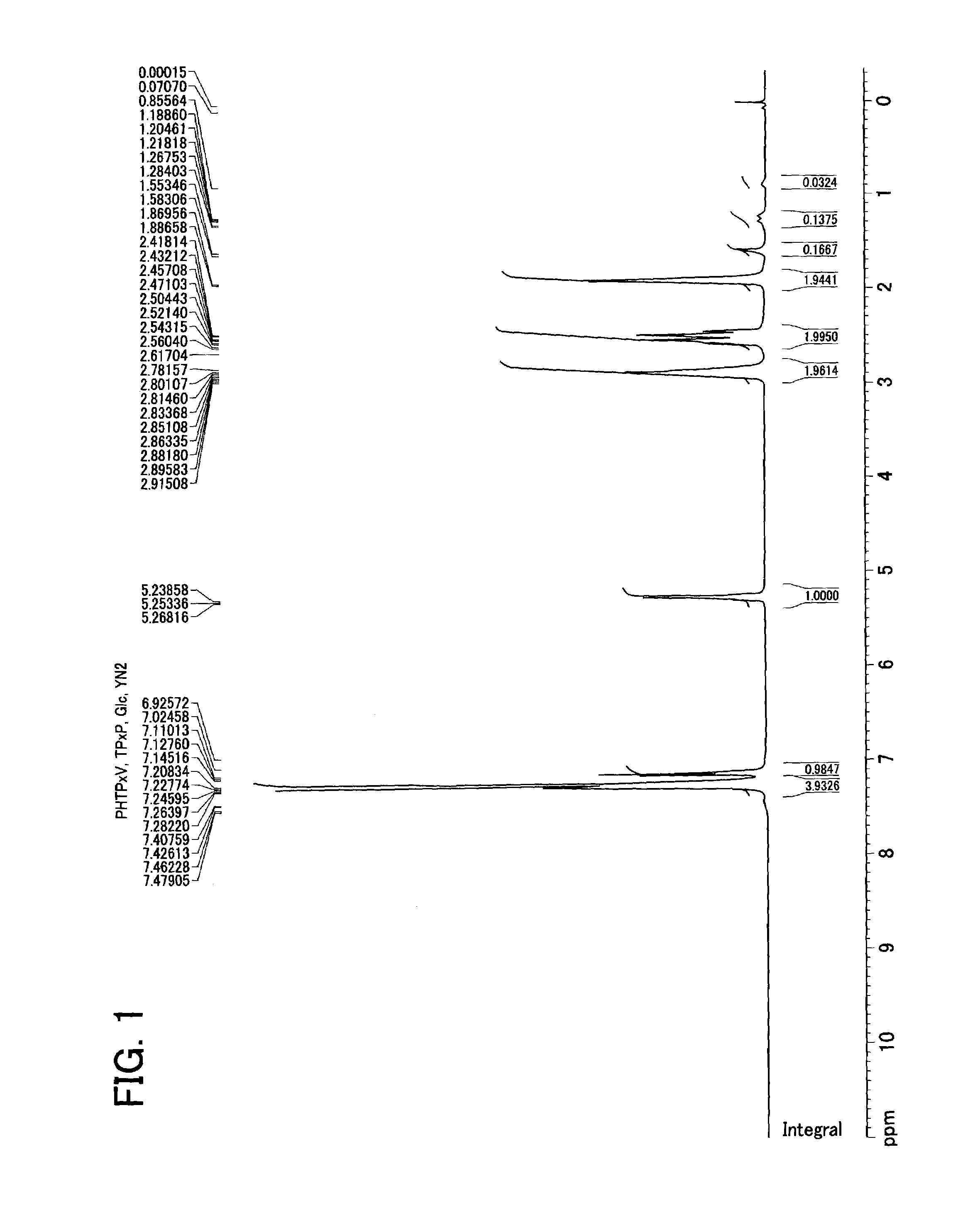Method of producing polyhydroxyalkanoate from alkane having residue containing aromatic ring in its molecule
- Summary
- Abstract
- Description
- Claims
- Application Information
AI Technical Summary
Benefits of technology
Problems solved by technology
Method used
Image
Examples
example 1
[0114]200 mL of M9 medium containing 0.5% (w / v) of glucose was prepared, placed in a 500 mL shake flask, and then sterilized by an autoclave. After the flask was returned to room temperature, 0.1% (v / v) of 1-(phenylsulfanyl) pentane sterilized with a filter was added to the medium, and well stirred. Then, a Pseudomonas cichorii YN2 strain was inoculated into the medium, which was then cultured with shaking at 30° C. at 125 strokes / min. 48 hours thereafter, cells were recovered by centrifugation, washed once with cold methanol, and then freeze-dried.
[0115]The freeze-dried pellets were suspended in 20 mL of chloroform and stirred at 60° C. for 20 hours to extract the PHA. The resultant extract was filtered through a membrane filter with a pore size of 0.45 am, and concentrated with a rotary evaporator, and then the concentrated solution was re-precipitated in cold methanol. Furthermore, only a precipitate was recovered and then vacuum-dried to obtain 96 mg of PHA.
[0116]The molecular w...
example 2
[0127]200 mL of M9 medium containing 0.5% (w / v) of polypeptone was prepared, placed in a 500 mL shake flask, and then sterilized by an autoclave. After the flask was returned to room temperature, 0.1% (v / v) of 1-(phenylsulfanyl) pentane sterilized with a filter was added to the medium, and well stirred. Then, a Pseudomonas cichorii YN2 strain was inoculated into the medium, which was then cultured with shaking at 30° C. at 125 strokes / min. 48 hours thereafter, cells were recovered by centrifugation, washed once with cold methanol, and then freeze-dried.
[0128]The freeze-dried pellets were suspended in 20 mL of chloroform, and stirred at 60° C. for 20 hours to extract PHA. The resultant extract was filtered through a membrane filter with a pore size of 0.45 μm, and concentrated with a rotary evaporator. Then, the concentrated solution was re-precipitated in cold methanol. Furthermore, only a precipitate was recovered and then vacuum-dried to obtain 52 mg of PHA.
[0129]The molecular wei...
example 3
[0130]200 mL of M9 medium containing 0.5% (w / v) of sodium glutamate were prepared, placed in a 500 mL shake flask and then sterilized by an autoclave. After the flask was returned to room temperature, 0.1% (v / v) of 1-(phenylsulfanyl) pentane sterilized with a filter was added to the medium, and well stirred. Then, a Pseudomonas cichorii YN2 strain was inoculated into the medium, which was then cultured with shaking at 30° C. at 125 strokes / min. 48 hours thereafter, cells were recovered by centrifugation, washed once with cold methanol, and then freeze-dried.
[0131]The freeze-dried pellets were suspended in 20 mL of chloroform, and stirred at 60° C. for 20 hours to extract the PHA. The resultant extract was filtered through a membrane filter with a pore size of 0.45 μm and concentrated with a rotary evaporator. Then, the concentrated solution was re-precipitated in cold methanol. Furthermore, only a precipitate was recovered and then vacuum-dried to obtain 200 mg of PHA.
[0132]The mole...
PUM
| Property | Measurement | Unit |
|---|---|---|
| Fraction | aaaaa | aaaaa |
| Fraction | aaaaa | aaaaa |
| Fraction | aaaaa | aaaaa |
Abstract
Description
Claims
Application Information
 Login to View More
Login to View More - R&D Engineer
- R&D Manager
- IP Professional
- Industry Leading Data Capabilities
- Powerful AI technology
- Patent DNA Extraction
Browse by: Latest US Patents, China's latest patents, Technical Efficacy Thesaurus, Application Domain, Technology Topic, Popular Technical Reports.
© 2024 PatSnap. All rights reserved.Legal|Privacy policy|Modern Slavery Act Transparency Statement|Sitemap|About US| Contact US: help@patsnap.com










